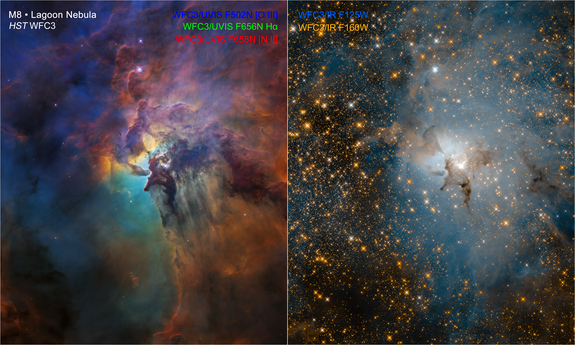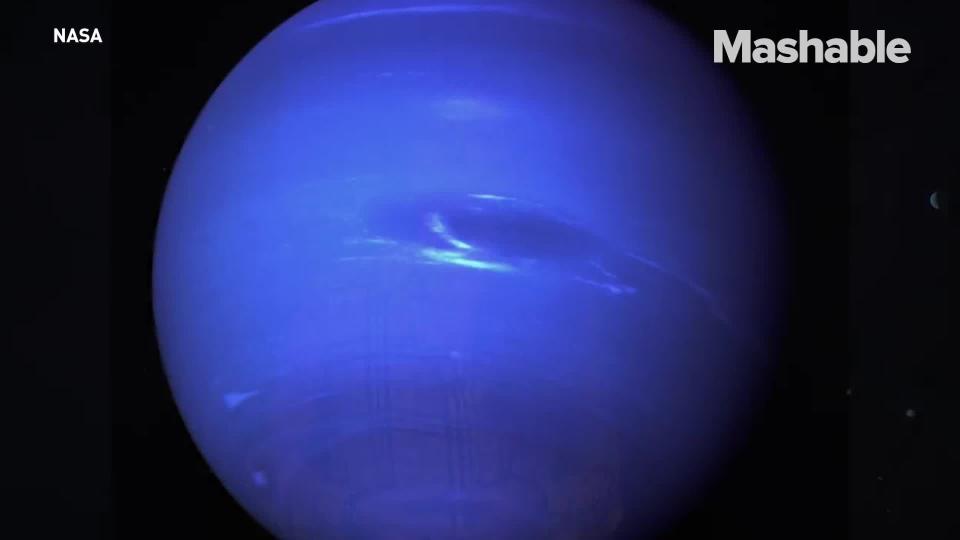The Hubble celebrates its 28th birthday by making us all feel small, as usual

A part of space 4,000 light-years away is filled with baby stars, and the Hubble Space Telescope can see them.
Two new photos taken by the intrepid telescope and released to celebrate the eye on the sky's 28th birthday show the Lagoon Nebula, a region of space filled with gas and dust that has given way to the birth of new stars.
SEE ALSO: Hubble Space Telescope spots the farthest star ever seen thanks to quirk of nature
"This dust-and-gas landscape is being sculpted by powerful ultraviolet radiation and hurricane-like stellar winds unleashed by a monster young star," NASA said in a statement about the photo.

Image: NASA/ESA/STScI
"Located at the center of the photo, the star, known as Herschel 36, is about 200,000 times brighter than our Sun. This hefty star is 32 times more massive than our Sun and 40,000 degrees Kelvin. Herschel 36 is still very active because it is young by a star’s standards, only 1 million years old."
The two photos show different views of the same nebula.
One, taken in visible light, shows reds, greens, and purples against the blackness of space, while the other, in infrared light, cuts through that gas and dust to reveal the stars within.
"Making infrared observations of the cosmos allows astronomers to penetrate vast clouds of gas and dust to uncover hidden gems," NASA added.
The Hubble Space Telescope launched to space in 1990.
Crews of astronauts have serviced the telescope over the years, but its life in orbit is coming to an end.
Engineers think that the Hubble should reach the end of its life in space by the early 2020s, when it will no longer be able to gaze out onto the universe and beam home images.
NASA's James Webb Space Telescope is expected to take up Hubble's mission when it launches in 2020.
That said, the $8 billion spacecraft's launch has been delayed for years due to cost overruns and developmental troubles, so hopefully the Hubble can stick around for a little while longer.
WATCH: Nasa's Hubble Space Telescope reveals a gigantic 'fart' storm on Neptune


